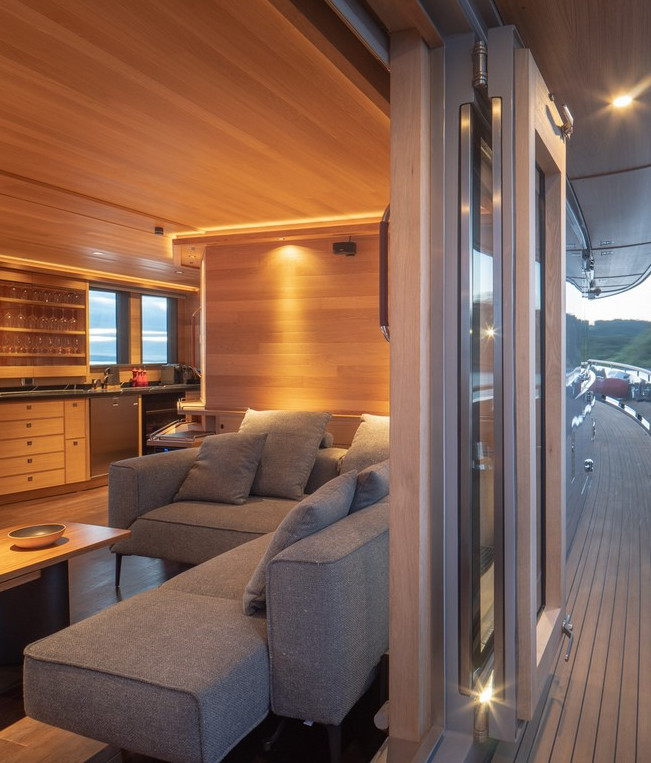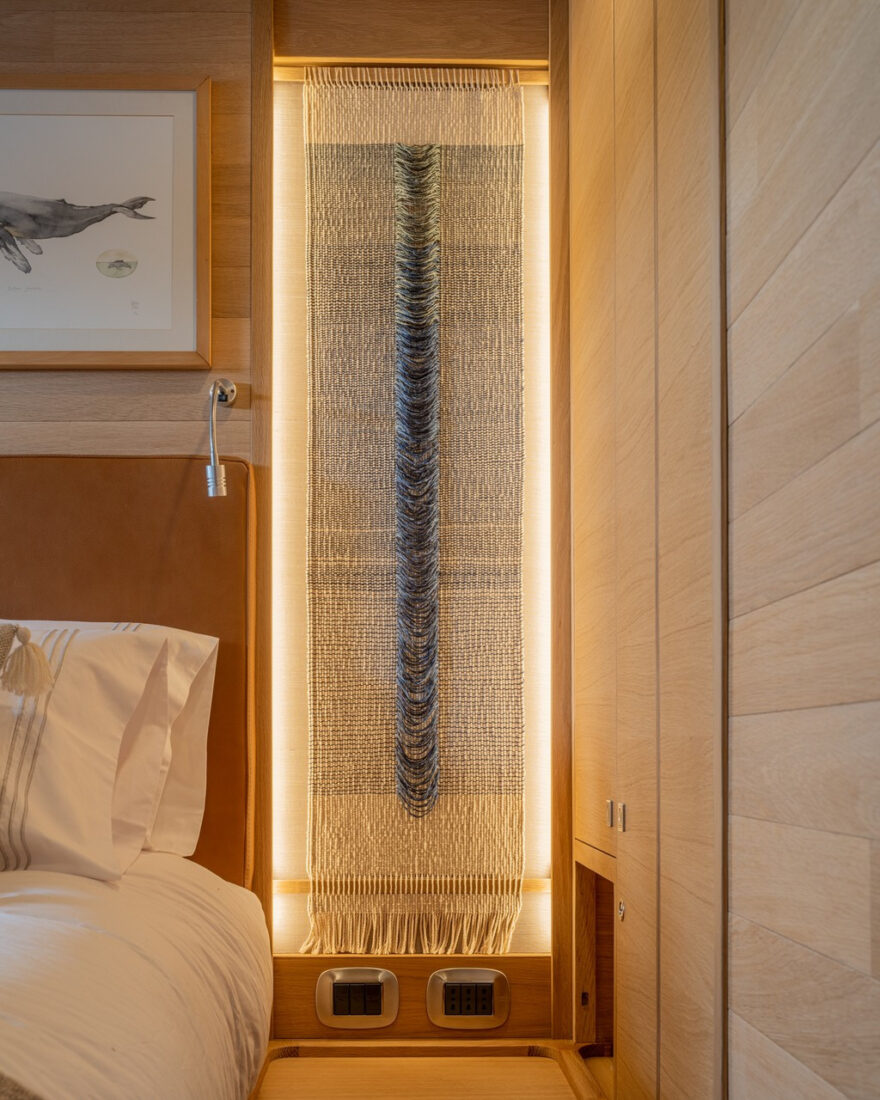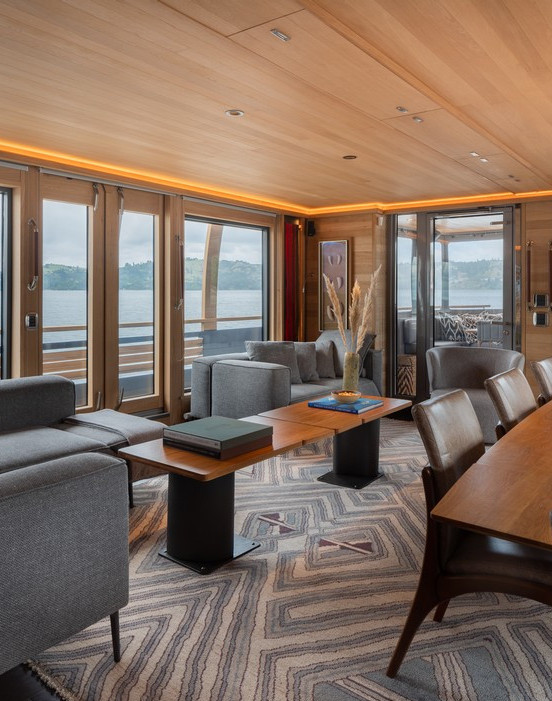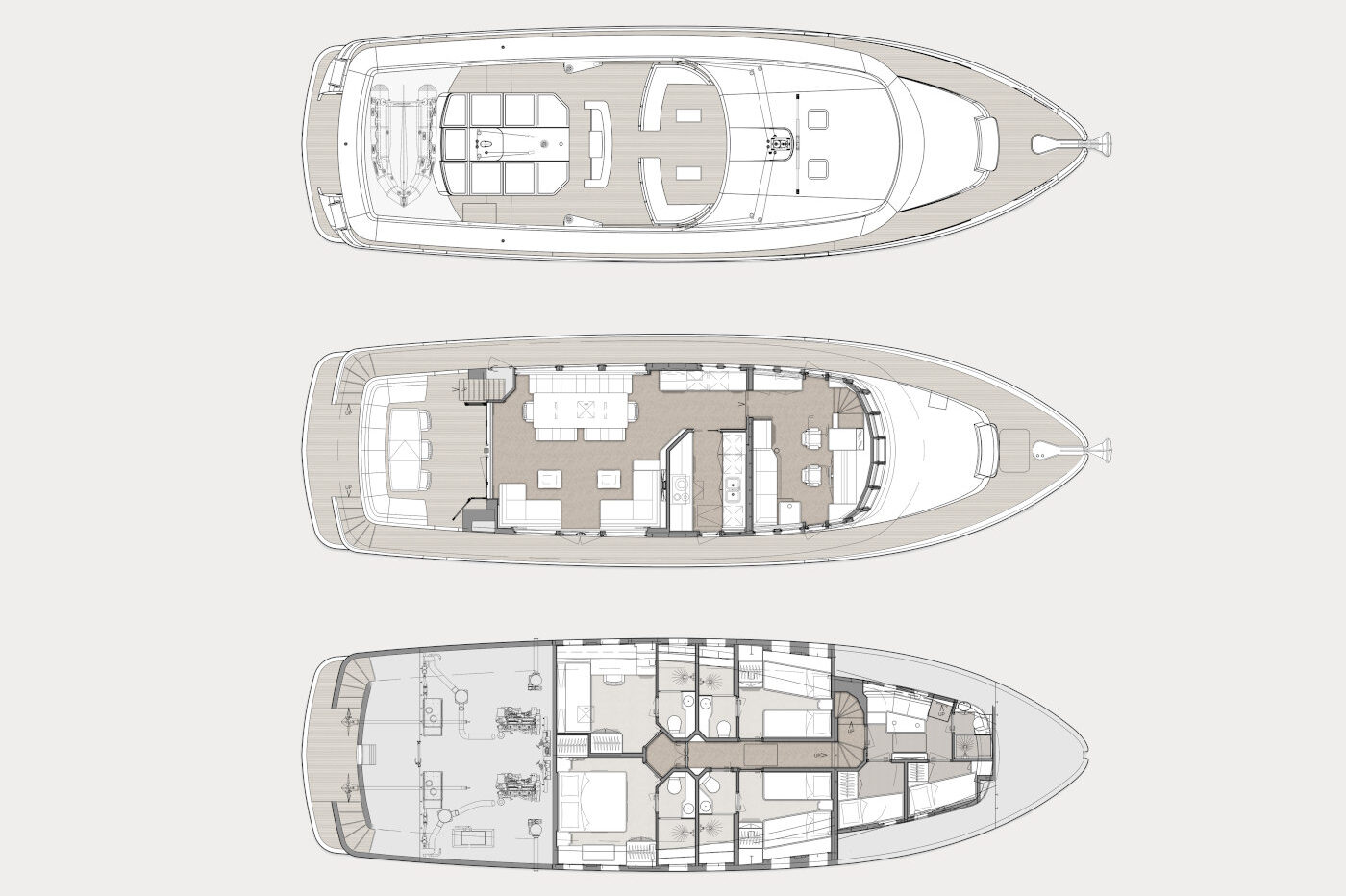
The Chonos were nomadic southern seafarers who once inhabited Western Patagonia – hunter gatherers who built and travelled by wooden canoes named Dalcas. Chile, however, is not where most owners would choose to build a 23.7m motorsailer, but then again, Cortés Solari isn’t most owners.
Solari is a Chilean philanthropist who has spent the past 20 years promoting her country’s comprehensive and sustainable development through science, education, culture and conservation. And she wanted to build at home: “I had originally intended on building a wooden boat just as the Chonos used to do, but my hope for world cruising, including Antarctica, dictated the need for an ice-breaking hull and for that you need to build in steel,” she says. It was a trade-off that she was happy to make if she could keep a traditional aesthetic.
Navik Patagonia was selected as the builder for Cachalote, which means sperm whale in Spanish. The shipyard was established in 2000 by Vicente Zegers and Natalia Assler. They began building wooden motor-sailers up to 22 metres, as well as carrying out refit work. As the yard grew, so did their ambition. They wanted to build a robust explorer ideally suited to navigate the technical waters around Chile.
“Modernity has distanced us from our marine and seafaring traditions. Even though it was more complex, I wanted to build something that imbues my country’s architecture and spirit, and is built in the traditional way of the Chonos.”
CORTÉS SOLARI - OWNER

“There were a couple of Vripack designed boats that had caught my eye for their long-range capabilities and explorer features,” says Zegers. Zegers also appreciated Vripack’s explorer heritage and naval architecture expertise.
During the design phase, Zegers and Assler spent a year travelling back and forth to Vripack’s offices in the Netherlands and spent weeks at a time in Sneek collaborating on ideas and poring over the designs. “We quickly established a good connection, and the first few sketches show the bones of the final design were there from the start,” says Marnix Hoekstra, Vripack Co-Creative Director.
Delivered in 2021, Cachalote is a steel-hulled explorer mated to an aluminium superstructure that features distinctive timber ribs and a large wooden overhang.
Patagonia experiences 12 knot currents, which makes it treacherous to sail without local knowledge. “We spent a lot of time studying wave patterns and developing hull lines that would provide the most onboard comfort in very tricky sailing conditions,” Hoekstra adds.
The layout of the Patagonia Explorer comprises a main saloon with a marble-clad galley forward. There’s accommodation for up to 11 guests, which is notable for a vessel of this size, and this was achieved by incorporating greater flexibility into the arrangement – for example, the owner’s suite has an adjoining office that can be converted into a guest cabin with three Pullman bunks. There are also two double cabins, both with single beds concealed in the ceiling.

From a sustainable standpoint, the boat’s ability to travel under sail guarantees a low fuel consumption, while solar panels on the roof support the hotel load. Most significantly for Cortés Solari, who has dedicated 12 years to researching the negative effects maritime traffic has on whales, vibrations and noise levels are kept to a minimum, helped by the boat’s quiet DMS stabilisation system.
When it comes to the naval architecture, Hoekstra points out: “You must regard her as a motorboat, because hydrodynamically it makes no sense otherwise, but it means she isn’t fully optimised for sailing high to the wind. However, she’s incredibly good at seakeeping when running on engine with a virtually unlimited range. When sailing, you follow the wind and there’s practically no rolling or heeling. A quick twist on the angle of the propellers sees her reach up to 14 knots.”
The interior aesthetic by Assler takes on a Scandinavian chic vibe, with bare woods sourced from sustainably managed forests and natural fabrics by Sunbrella. The master suite features hand-woven tapestries and loose furniture sourced from Belgium, while the joinery and carpentry were undertaken by Navik.
The build was carried out by Navik Patagonia’s Chilean workforce, supported by a host of international suppliers and partners to bring the best in yachting techniques, including a fully engineered build package supplied by Vripack. The result is a comfortable, stable explorer capable of cruising remote regions with minimal impact on the oceans.
The boat’s maiden voyage saw it cruise around Chiloé Island in the Gulf of Corcovado in north Patagonia, and she took on northern Patagonia’s icefields for the second. Since then, the boat has cruised around southern Chile three times with Cortés Solari at the helm. In terms of prototypes, Cachalote is a true success.
“My hope is that by building Cachalote we can fly the flag for Chile’s shipbuilding expertise and reinvigorate our seafaring traditions.”
CORTÉS SOLARI - OWNER

| LOA | 26 |
| BEAM | 7.15 |
| DRAFT | 2.05 |
| ENGINES | 2 x Cummins 330 bhp |
| SPEED (max/cruise) | 12/10.5 |
| RANGE AT 8 knots | 2600 |
| FUEL CAPACITY | 9000 ltrs |
| FRESH WATER CAPACITY | 6000 ltrs |
| OWNERS/GUEST | 11 |
| CREW | 2 |
| CONSTRUCTION | Steel Hull and Aluminium superstructure |
| CLASSIFICATION | CE-A |
| NAVAL ARCHITECTURE | Vripack |
| EXTERIOR DESIGN | Vripack |
| INTERIOR DESIGN | Natalia Assler |
| BUILDER/YEAR | Navik Patagonia 2021 |
Enter your details below to have the latest news and projects delivered to you.